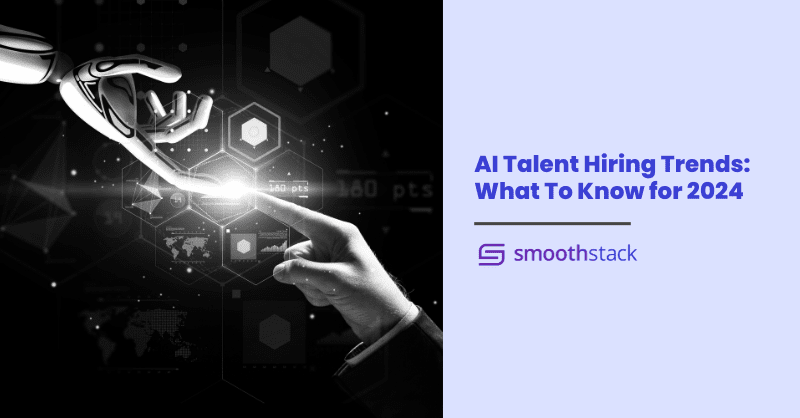AI Talent Hiring Trends: What to Know for 2024

Elon Musk recently proclaimed artificial intelligence “one of the most disruptive forces in history.” While Musk’s controversial prediction that AI will eventually eliminate all jobs is up for debate, what isn’t in question is the urgent need for AI talent right now.
The current AI use cases across the business world run the gamut, from supporting Kaiser Permanente clinicians in mammogram screenings to PepsiCo’s efforts to ensure consistency in the texture, crunch, and shape of Cheetos cheese puffs (no, really).
The layoffs in the tech sector earlier this year did very little to soften the longstanding tech talent shortage. Many businesses are still actively trying to harness the power of AI – especially with the development of generative AI.
In fact, job postings on Adzuna that include the term “generative AI” are up 3300% since January. We’d be remiss if we didn’t mention the most infamous AI job posting, courtesy of Netflix, boasting a $900,000 salary.
The AI hiring spree extends to federal agencies as well. In October, the Biden administration called for a government-wide AI talent surge.
We’ve rounded up four of the latest articles and research to help you make sense of today’s AI talent hiring trends.
AI talent hiring pitfalls to avoid
BCG identified six mistakes companies make when hiring AI talent.
-
- Competing head-to-head with tech companies without highlighting non-tech-related differentiators that will entice AI hires.
-
- Trying to recruit AI talent with the standard slow process led by generalist recruiters.
-
- Paying premium prices for cutting-edge data scientists without considering the broader mix of skills needed.
-
- Onboarding AI employees without creating a community and embedding them into the organization under AI-trained leaders.
-
- Fiercely recruiting AI talent without providing advancement opportunities.
-
- Overlooking upskilling and reskilling opportunities within the organization.
Creating an AI skilling journey
Companies are hiring and top IT staffing companies are hiring for them, but the roles are changing too quickly for them to keep up. McKinsey partner Helen Mayhew talked about what companies can do to continue skilling their early-career talent found via bootcamps and training programs like Smoothstack.
“As employers, we have to think creatively about how we find talent and develop a meaningful apprenticeship journey to help them develop skills as role requirements change, which can be as frequently as every six months.”
The benefits of “renting” AI talent
A recent Quartz article talked about when and why to build (upskill), buy (hire), or rent (contract with) AI talent.
There are three main benefits to using contractors and consultants – or in the case of Smoothstack, custom-trained AI talent.
-
- Quality. You get talent that’s difficult to hire full-time and has seen a lot of different use cases, bringing a high degree of cognitive diversity and upskilling to your team.
-
- Flexibility and cost efficiency. Building AI involves a different kind of product development cycle. You want to start small, remain flexible, and iterate.
-
- Speed. Smaller teams deliver innovation faster.
The soft skills that make AI talent successful
A CIO article covered how AI is reshaping demand for IT skills and talent.
“Technical skills are changing faster than ever—to the point where it’s likely that what students learn in their first year of a CS degree could be obsolete soon after they graduate. AI will only accelerate the pace of technology, and even automate some of the hard skills IT professionals have to offer, which means soft skills will only become more important.”
The article lists critical thinking, problem solving, communication, and collaboration skills as those that put AI talent ahead. Smoothstack CTO Prashanth Ramakrishnan talked more about many of these skills in a recent blog post, Solving the IT Talent Shortage with Soft Skills: The Non-Technical Markers of Future Top Performers.
All signs point to a continued (and accelerated) need for AI talent in 2024. Now’s the time to ensure your hiring strategy and IT staffing services company is aligned with current AI hiring trends, increasing your chances of bringing in the right skills and talent to drive your IT agenda.
Let’s Build Your Team
Connect with the Smoothstack team to learn how to close your digital skills gap with a custom-trained team.